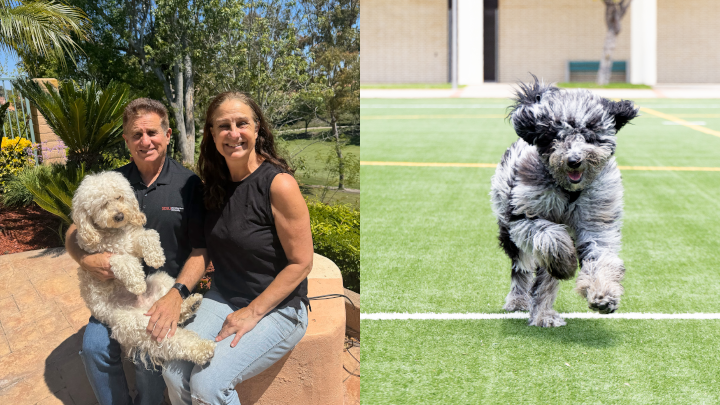Training Tomorrow's Engineers
SDSU engineering students are crafting better materials for planes, spaceships and future homes on the moon.

The article first published in the 2022 edition of Highlights: A Magazine of Research, Scholarship and Creative Activities at SDSU.
Buzzing with over a dozen student researchers, Satchi Venkataraman’s aerospace engineering lab is developing new composite materials to use in planes, spacecraft and potential lunar dwellings. With funding from the California Space Grant Consortium, he is training talented and diverse students to be the research engineers of tomorrow.
“One of the core values of my lab is to learn to be a mentor to others and help those just starting in research,” Venkataraman said.
Venkataraman was scrolling through Etsy looking for gift ideas when he stumbled upon a metal cast of a fire ant nest. He added it to his cart with his mind full of new ideas about how this could help him answer research questions about nature-inspired materials.
Now that first cast and another with a green sheen sit on the desks of aerospace engineering master’s student Tyler Felgenhauer and undergraduate engineering student Emma Topolcsik. They are trying to determine how the air-filled tunnels and cavities manage to not collapse under the pressure of surrounding dirt or creatures passing over the surface.
Using X-ray computed tomography and digital tools they created models of these ant nests, allowing them to run simulations of over 3.5 million data points to compare the nests’ load-bearing properties to simpler fractal structures.
For Felgenhauer, this is a once in a lifetime project. “It’s very intriguing and I wouldn’t be able to work on this in industry,” he said. “I enjoy how challenging it is.”
Figuring out how these structures work on different scales could inform human-sized underground caves on the moon, foam insulation materials, and even hydrogen energy storage.
Riding the Waves
Aerospace engineering major Gabriela Gonzalez Ayala worked on characterizing the geometry of a defect in carbon fiber-reinforced materials called ply waviness.
These materials are typically lighter, stronger and stiffer than other metals used in aircraft parts. However, sometimes when making curved areas, the layers of the carbon fiber-reinforced materials overlap unevenly, resulting in unwanted waves that could weaken the material.
“Ply waviness is a manufacturing error that can’t really be avoided, but understanding how failure initiates and progresses in these parts will make maintenance of parts more efficient,” Gonzalez Ayala said.
For her research project, she made two 12-inch by 12-inch carbon fiber-reinforced panels and analyzed how pieces of these performed under tension — or pulling. Using a microscope, she measured how thick the material was around any defects and how big the defects were.
“I enjoyed discovering a dynamic where I’m working with a team that’s trying to reach the same goal, and every person is solving a different aspect of the goal, as they rarely are simple projects,” Gonzalez Ayala said. “The idea of leaving even a small mark on this field of research was very fulfilling for me.”
Bend Until It Breaks
Mechanical engineering major Julia Hong has been testing breakage patterns of new aircraft composite materials. She placed strips made of carbon fiber-reinforced polymer and stainless steel sheets into tension grips and measured how much they could be pulled and bent before breaking. Strips with more overlap in the two materials had more division in the layers but stayed intact compared to strips with less overlap, which cracked in half.
Hong joined the lab as part of SDSU’s Mathematics Engineering Science Achievement (MESA) program summer research academy. She gained skills in machining, solid modeling, microscopy, testing, analyzing results, and presenting a poster.
She said she appreciated the support she received in the lab from individuals of various backgrounds, including graduate, undergraduate, local and international students. Hong will continue her research in Venkataraman’s lab this fall.



